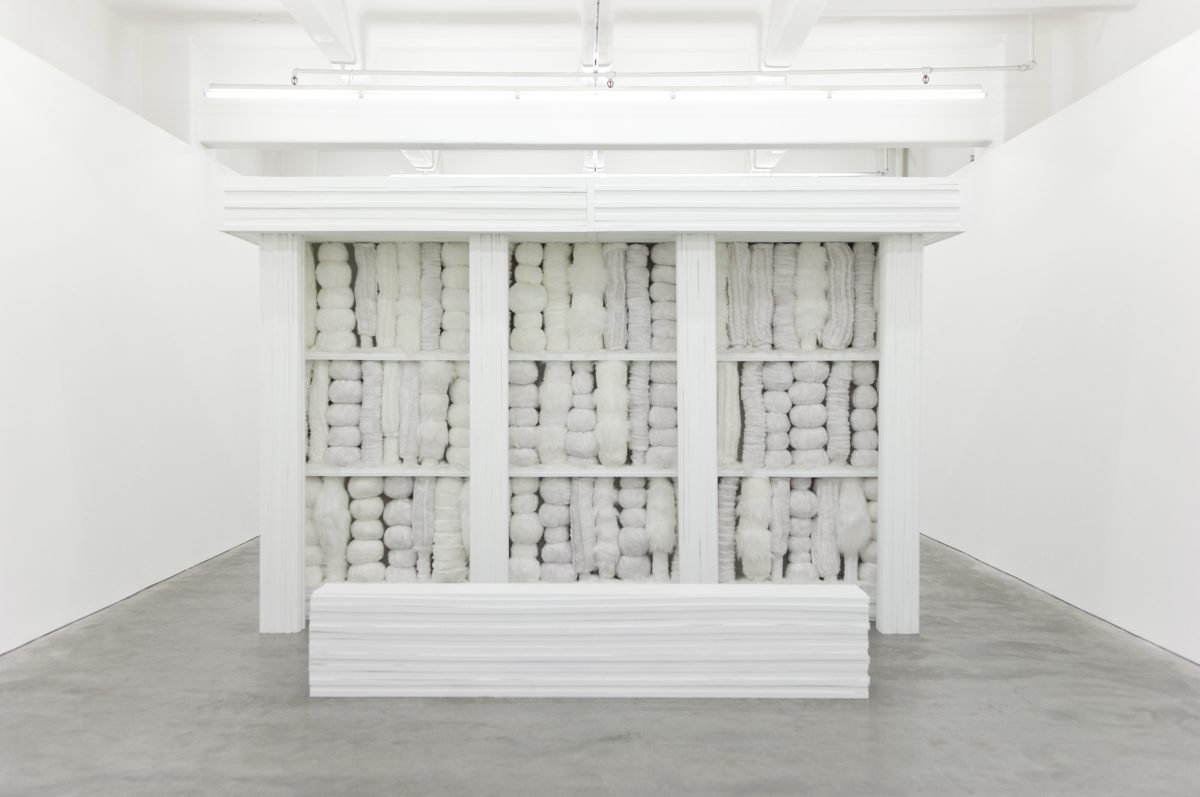Kathy Temin
Memorial Gardens
19th – 25th August 2012
Anna Schwartz Gallery
A garden is a strange kind of memorial. The most familiar form of the memorial is probably the monument, which is typically permanent, unchanging and immutable. In contrast, gardens are susceptible to time and change; they are, however oxymoronically, permanently mutable. Yet gardens have historically served as memorials: Jean-Jacques Rousseau’s monument on the Isle of Poplars in the landscape garden at Ermenonville and the Parisian cemetery Pere Lachaise are only among the most famous examples. Like Nicolas Poussin’s seventeenth-century paintings of an enigmatic tomb in Arcadia, which Ermenonville and Pere Lachaise are conceptually indebted to, both imply the theme of ‘Et in Arcadia Ego’, or the inevitable presence of death in paradise.
Kathy Temin’s ‘Memorial Gardens’ seem to me to belong to this lineage of the monument, historical practices of memorialization, and the theme of mutability. Pavilion Garden, 2012 for example evokes Temin’s mother’s memory of a specific monument, the Holocaust Memorial Wall at the Berzeviczy Synagogue in Ujpest, Budapest, which she first saw with Temin’s father in the 1970s — The name of his brother, Zsigmond Temin, is inscribed on the wall amongst many others. Temin herself has since made several attempts to find this Memorial Wall, relying on her mother’s memory of its location.
Pavilion Garden, thus recalls an actual monument that has deep personal significance to Temin. But Temin’s transplanted wall with its serial topiary; nature manipulated and controlled; constrained within a structure that nearly, but not quite, resembles a Vitruvian temple façade; also engages with and participates in cultural memory. Her miniature topiary trees recall both the names inscribed on the wall in Ujpest and, more generally, the Sisyphean endeavor of landscape design and management to fix nature durably in time and space.
These two historical preoccupations, the logic of memory and the limits of temporality come together at Ermenonville and Pere Lachaise, as they do in Temin’s Memorial Gardens. All three might finally be best described as lieux de memoire (places of memory), sites in which history is permanently transformed by memory.
Luke Morgan
Luke Morgan is a Senior Lecturer at Monash University in the faculty of Art, Design and Architecture. The University of Pennsylvania Press has published his book Nature as Model on the French architect and polymath Salomon de Caus in 2007. His essay ‘Abstract Fountain Design’, was published in Modern Times: The Untold Story of Modernism in Australia 1917 – 67 Sydney: Powerhouse Publishing and Melbourne: The Miegunyah Press, 2008. He is currently writing a book about monsters and monstrosity in early modern landscape design.
Images

Kathy Temin
Pavilion Garden, 2012
synthetic fur, acrylic paint, synthetic filling, steel, MDF
275 x 445 x 124 cm; bench: 51 x 273 x 40 cm
installation view, Anna Schwartz Gallery

Kathy Temin
Tombstone Garden, 2012
Synthetic fur, acrylic paint, synthetic filling, steel, MDF
230 x 429 x 180 cm overall

